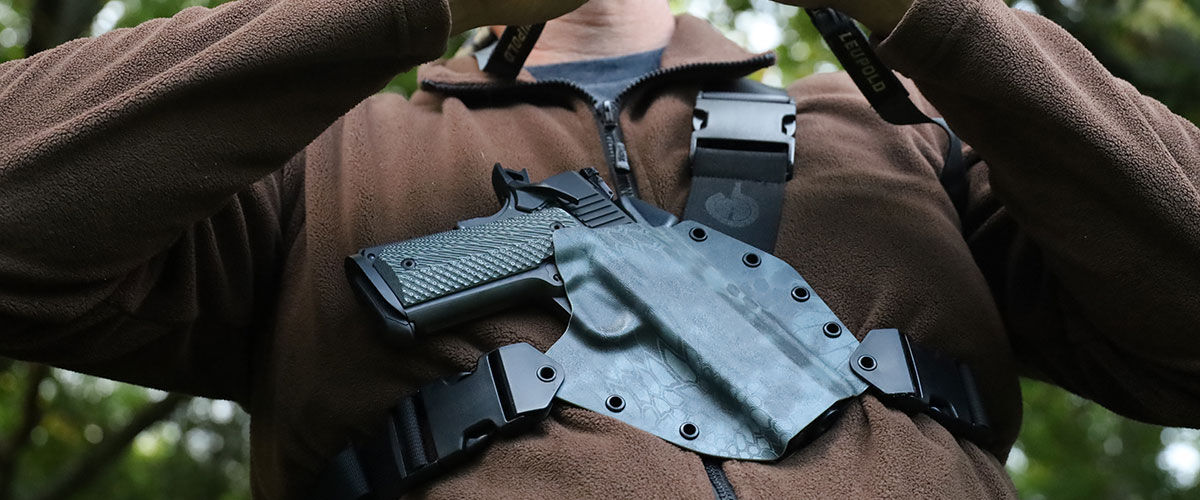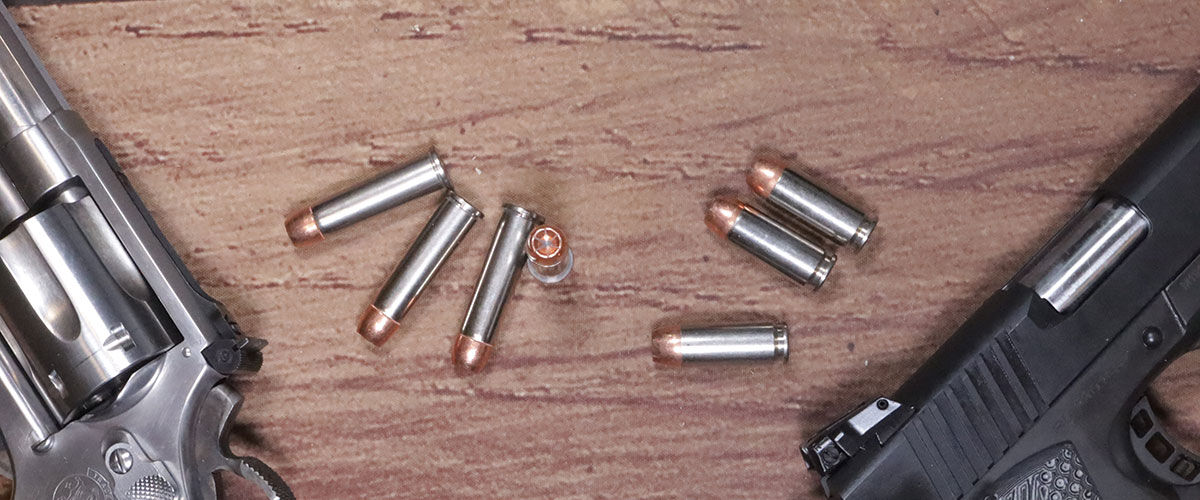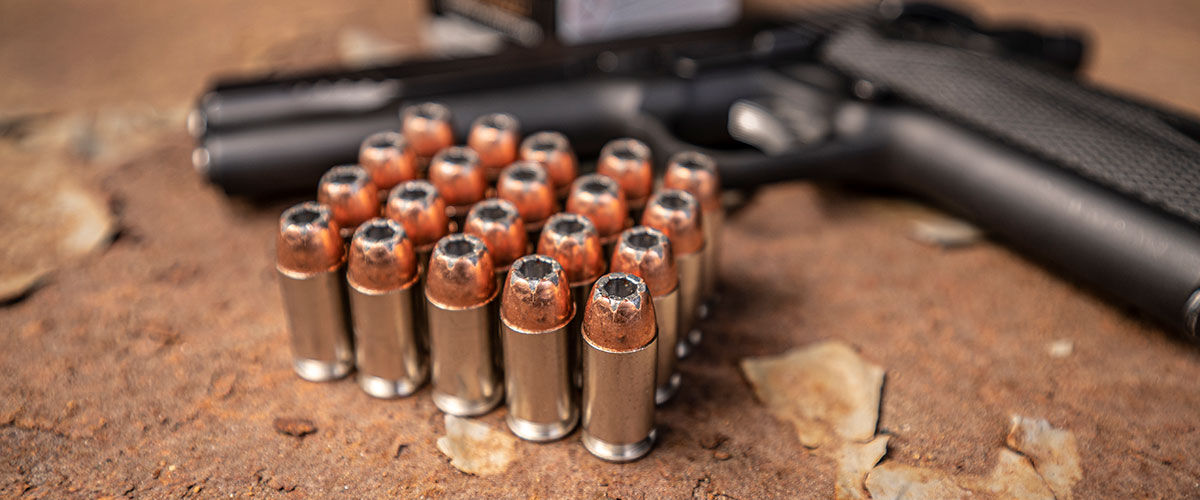
I’m a fan of wild places, and some of the most memorable and striking landscapes I’ve ever seen were far away from anything resembling a paved road. But risk accompanies us in these remote areas. Being far away from the crowds usually means being away from assistance, and that’s why one item you’ll certainly want to bring on a wilderness excursion is an appropriate firearm loaded with the right ammunition.
In remote areas, a firearm is primarily useful for self-defense, because you’ll be responsible for your own safety. But it’s also a superb way to share your location with anyone who might be searching for you, and it can be a valuable tool for procuring food.
Okay, I’ve sold you on the need for carrying a firearm in the wilderness. But what type of gun should you use, and which load should you feed it?
Firearm & Ammo Selection
My favorite sidearm for such situations is a handgun. A shotgun or rifle is more versatile, but portability is extremely important in a backcountry firearm and having both hands completely free is a major benefit when crossing rough terrain. I’ve also found that a handgun secured to the body is always with you. Your long gun doesn’t offer much protection when you lean it against a tree and wander into the bushes each time nature calls.
There’s a long-fought battle between revolver and pistol fans as to which makes more sense in the backcountry. Big-bore revolvers pack a greater punch, but pistols are generally easier to carry and offer greater capacity. Think that doesn’t matter? You’ve obviously never been counting down cartridges as you fire three-shot salvos in the air, praying that someone will hear your distress signal.

Any gun you carry is better than no gun at all, but for defensive purposes, I’d exclude rimfires. Instead, I focus on centerfire cartridges, and for pistols this starts with the 380 Auto and ranges up to the 10mm Auto. Sure, there have been a few autoloading pistols chambered for cartridges like the 44 Magnum, but those aren’t terribly practical for backcountry applications. Revolvers are more popularly chambered in large magnums like the 454 Casull, 44 Remington Magnum, and 357 Magnum, and they offer substantially more stopping power than their semi-auto counterparts, but weigh more, too.
Bear Necessities
But how big of a gun do you need? For years the deciding factor has been the size of the largest predator you might encounter. In other words, are there grizzly (or brown) bears where you’ll be poking around? An outsized black bear may tip the scales at 500 pounds, but a well-fed coastal brown bear may weigh well over a ton. All bears have a robust musculoskeletal system, but the size and strength of a grizzly or brown bear is truly awe-inspiring. For years, we’ve believed that a 44 Magnum was necessary in big bear country, and there was fear that smaller rounds would not stop a bear. But data on bear attacks is revealing. In a long-running AmmoLand study, firearms were 98 percent effective at stopping bear attacks—even in cartridges as small as 22 WMR!
I’m not suggesting that you rely on carrying a 22 WMR in bear country, but I do believe the 357 Magnum, 40 S&W, 45 Auto, and even 9mm Luger are more effective at stopping bears—even big bears—than previously imagined. I would have doubted this was the case a few years ago, but the data demonstrates otherwise.

There are, of course, two caveats. First, you have to hit the charging bear, and you have to have ammunition that works properly. There’s a very good reason law enforcement agencies like the FBI spend so much time and money gel testing bullets before they settle on a brand. Second, caliber or cartridge is not the sole deciding factor in whether a round stops a threat, regardless of it’s a grizzly or an armed bad guy. Instead, bullet performance is critical.
My choice for backcountry ammunition includes a bullet that is bonded to the jacket like Speer’s Gold Dot. I want to know that the projectile will expand and shed energy, but I also want to be certain that the bullet will hold together even against heavy muscle and bone. Gold Dot bullets have performed exceedingly well in FBI gel test evaluations because they penetrate and hold together. Armed with a bullet like that, I opt for a versatile gun that I can carry in a chest rig or belt holster.
Whatever drives your personal decision, remember it doesn’t matter what you carry if you can’t hit your target or the bullets break apart on impact. So, select a firearm with which you will practice often and load it with bullets that will stop the threat in its tracks.